Summertime is always marked by an explosion of life. The air is filled with birdsong, flowers are blooming, and frogs sing from ponds and wetlands. Perhaps the busiest lives in summer, though, are invertebrates. These are small animals with no internal skeletons. They include things like spiders, insects, pillbugs, mites, and snails. For simplicity’s sake, bugs. But where do these bugs go in the winter?
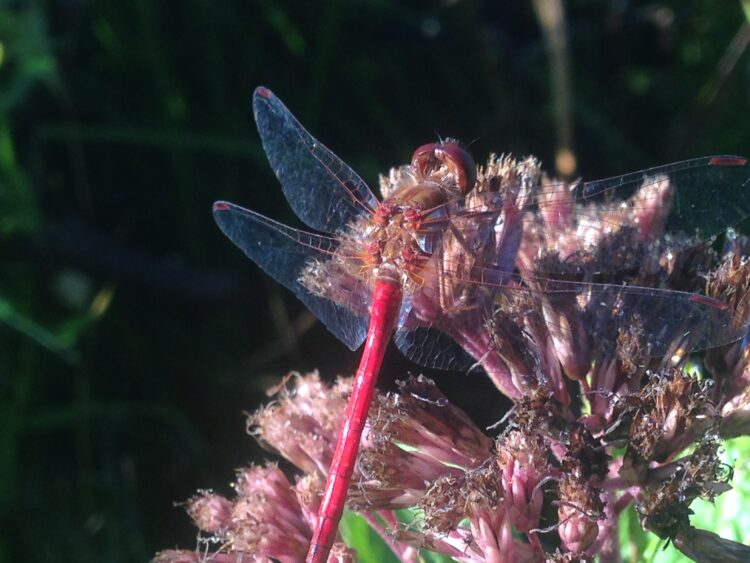
During summer, we hear crickets and cicadas singing, see butterflies and diverse other pollinators crowded around flowers, dragonflies zooming around meadows. The intensity of insect life can be staggering. It is even more amazing if you consider how that place looked 6 or 7 months before. Have you ever walked in the same place during winter and summer, and felt the difference?
Although trees have lost their leaves by that time, one of the other striking differences is the quiet. No buzzing wings, creepy-crawly legs, or busy lives bustling away in the leaves or under logs. Somehow, the incredible noise and commotion of invertebrate life comes back every summer and vanishes without a trace by wintertime. Where did they go?
How do bugs survive winter?

Winter is a tough time for most living things. Food is scarce and water can be too. For instance, all of it can be bound up in ice and snow and not available for drinking. Sunlight is limited at best, and temperatures can get brutally cold. Anything that doesn’t find shelter risks the dangers of being cold, or even freezing to death. With no food, starvation is a major threat.
Many insects don’t live long enough to see winter. Like annual flowers, they are born in spring or summer, and live a few days, months, or weeks. As adults, they reproduce, and then die. Their obvious absence in winter woods is simply because they aren’t there. Others just up and leave. Monarch butterflies (Danaus plexippus) famously migrate Southward every year to escape winter. Their descendants work their way back up in the spring the following year.
But what about the bugs that stay? Not all bugs die every winter. For those that do, their offspring still have to survive until the weather is nice again. With a few fascinating exceptions, most bugs in winter are hidden from us in one way or another. While the forests and fields are quiet, they are toughing out the winter season where we can’t see them.
Taking Shelter
Adult insects, just like most other animals, will seek shelter to escape unfavorable conditions. This is often why you’ll often find bugs in your home in the Fall. The shelters that we make for ourselves look cozy and inviting for many other species, too!
The Mourning cloak butterfly (Nymphalis antiopa) is one example—these handsome, hardy animals will hunker down inside of a hollow tree or similar crevice for a bit of protection from the elements. Protective chemicals keep them safe from the damaging effects of freezing. These are like a sort of biological antifreeze in their blood. They emerge in the spring well before some flowers have even started blooming!
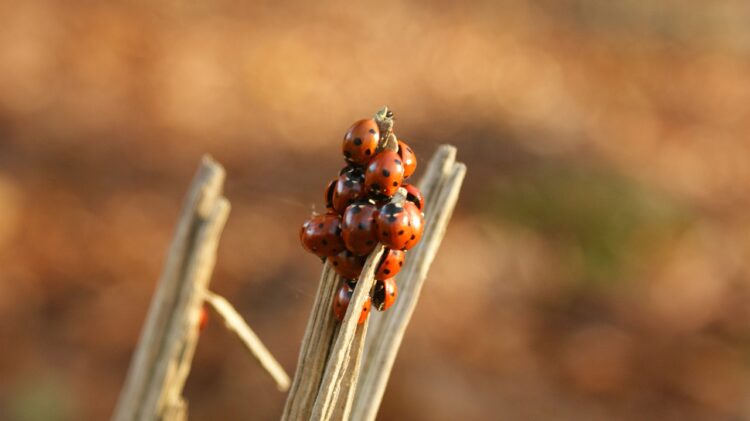
Not everyone rides out the winter alone. Winter is cuffing season, and having a cuddle buddy makes it much easier to get through the cold months. While there isn’t a romance involved, Ladybugs famously come together in sheltered places to wait out the winter. They use aggregation pheromones to find and attract one another.
Hundreds and thousands of ladybugs can be found spending the winter together, usually in the hollows of trees. It’s also common to find them inside of older homes in cold climates. Coming together in such big numbers can help them maintain healthier moisture levels during dry months.
The underground (or underlog) scene
Adult wasps and bees—usually queens, who are the only ones that live out the winter in many species!—tend to shelter in leaf letter or under rocks and logs. Temperature and humidity will be more mild during in those refuges throughout the winter. Many insects that overwinter as larvae do the same. Some of them even tunnel deeper into the ground, where at certain depths the earth’s heat keeps them from ever freezing. This means that leaving brushpiles and leaves around your back yard can be a great way to support insect populations.
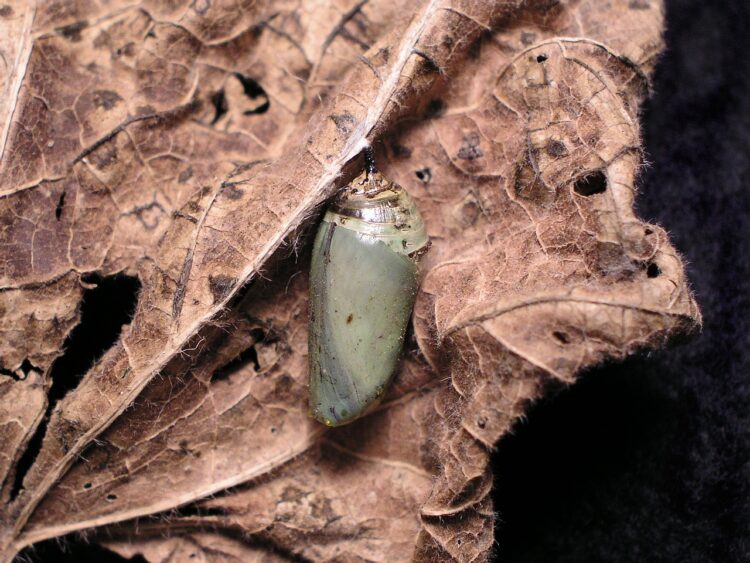
Still other insects overwinter as pupae or cocoons, or eggs laid by their parents in the summer. They survive by being tiny, camouflaged, or tucked away in cracks and crannies in trees, branches, and rocks. Sometimes the risk of drying out or freezing is less severe at these life stages, making it easier to survive harsher conditions. Nonetheless, just like overwintering adults, insect eggs and pupae that persist in winter conditions often have their own forms of antifreeze or other protections from the cold.
Winter snoozing: Hibernation and Diapause
Having antifreeze for blood, finding shelter, being a cozy little egg or pupa, or even finding cuddle buddies are all great ways to keep the elements at bay. However, that doesn’t help you find food: none of these solve the starvation problem that faces bugs in winter. Almost across the board, insects that survive the lean times of winter do so not by finding food but by finding ways to not need food.
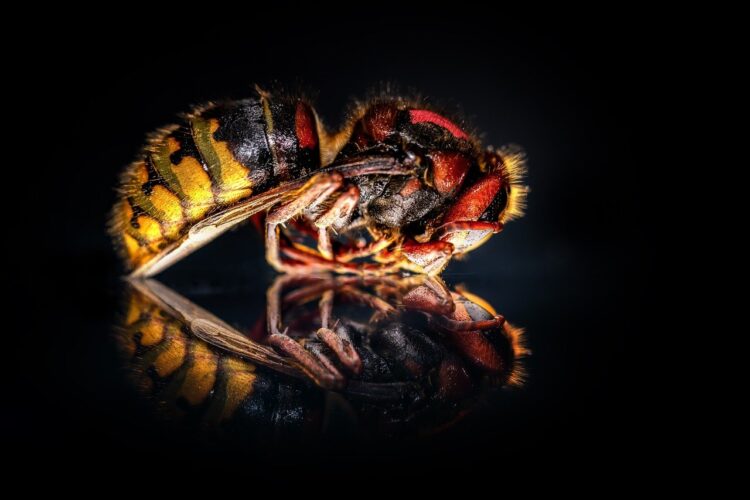
In particular, most insects slow down their metabolisms. Think of this like putting a computer in sleep mode or a fancy car into eco-friendly mode. This lets bugs increase their ‘fuel mileage’. Bugs are ectotherms, living things whose body temperature is more dependent on conditions outside.
This means that they cool rapidly with declining temperatures. They are adapted to take advantage of this by letting their whole body go into slow-mo. Their body’s functions decline to mostly essential activities only, movement more or less ceases, adult insects go into a state more or like what we think of as hibernation, which we often call aestivation.
Aestivation can be thought of as a ‘deep sleep’, but rather than having the sort of healing and restorative activities we associate with sleep. Sleep is actually a pretty active, restorative, and energetically expensive process! Aestivation is more like prolonged sedation.
In bugs that are overwintering as eggs, larvae, pupa, or other life stages, they may go into diapause. This is a ‘pause’ in their development toward adulthood. This also allows them to conserve energy, and remain in a safer, often times hardier state until it is safe for them to metamorphose into adults and find available foods.
Carrying on as usual
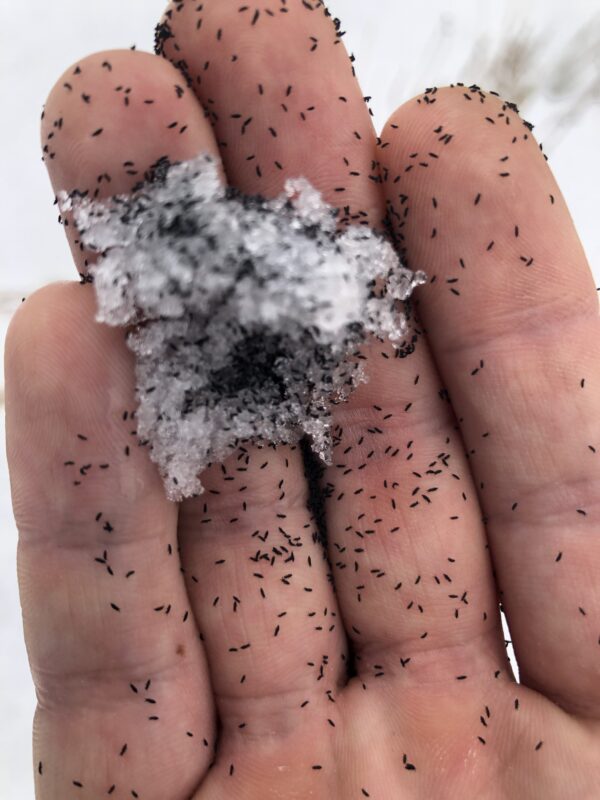
Some insects don’t seem to bat an eyelash even about pretty intense winters. The larvae of aquatic insects like dragonflies and damselflies (Odonata) actually stay active all winter. They just hang out in the unfrozen water under the ice of lakes, ponds, and larger streams. Since they are protected by water that stays relatively warm throughout the season, they don’t have a whole lot to worry about. There are also bizarre winter-loving insects. For example, snow fleas (Hypogastrura nivicola) and Snow flies (Chionea sp.) that don’t mind the cold and the snow at all. Keep an eye out for a post on these wonderbeasts in the near future.
Biding their time
Next time you’re enjoying the sounds of crickets on a warm summer evening, or the hustle and bustle of insects in a sunlit meadow, consider that everything you’re seeing was there all along, in one form or another, throughout the cold of winter. Whether they bailed out to warmer climes and came back later, went into sleep mode, organized a giant cuddle puddle, or protected themselves with natural antifreezes, that abundance of life was just waiting beneath the surface—some of it literally!—for the summer party to begin again.
Thanks for reading about bugs in winter!
Don’t forget to like, comment, or share this post if you enjoyed it! As always, if you have questions that need their own Naturalist Answers, I’d love to hear from you!

